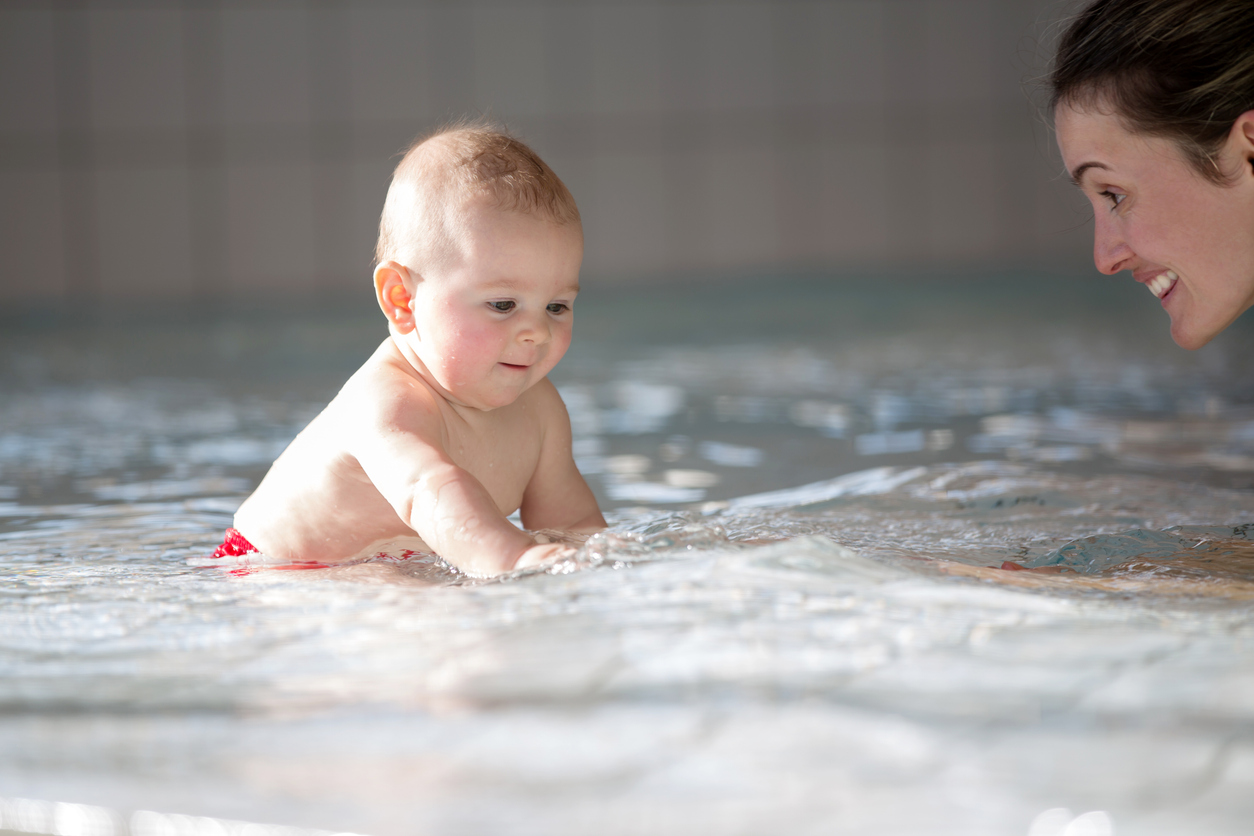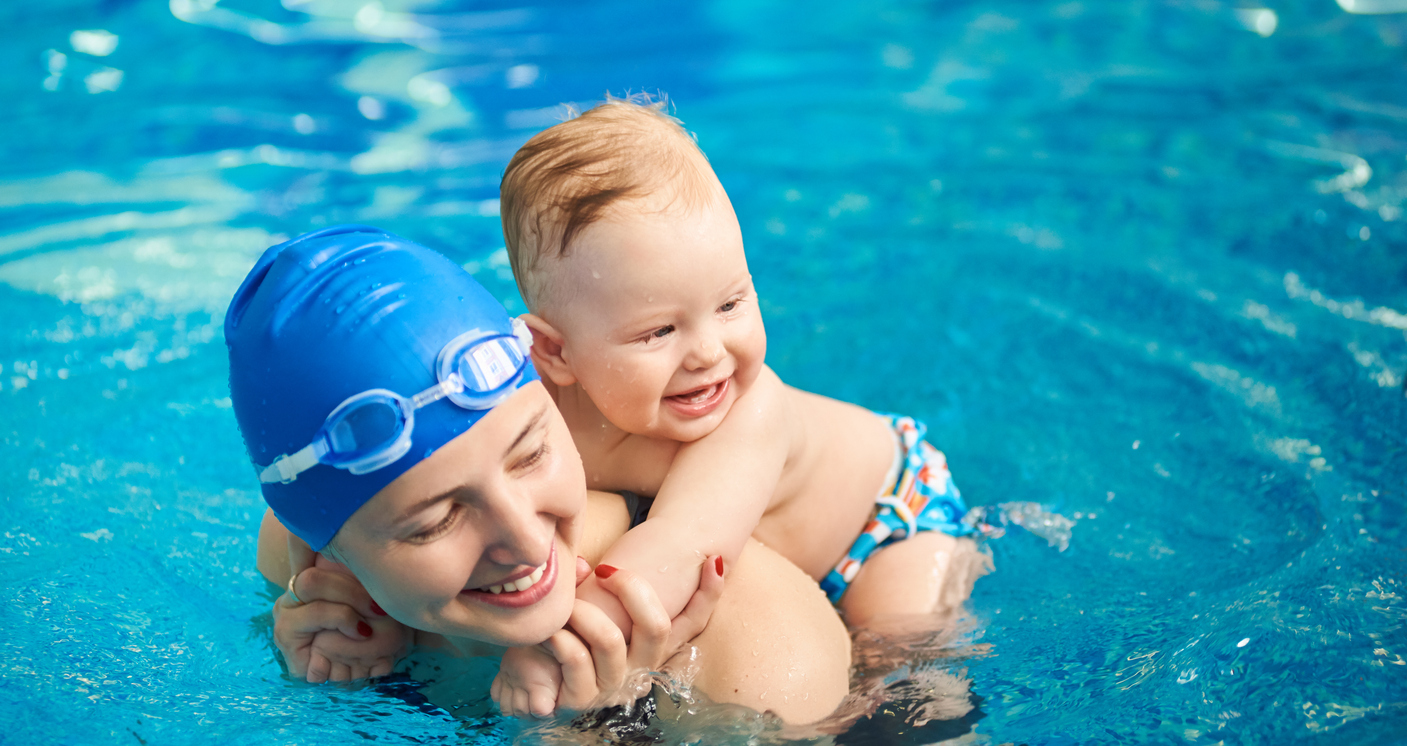For new parents, the wealth of advice on how to nurture and develop their child can be overwhelming. One area of child development gaining attention is infant swimming. While the notion may give some parents pause, the benefits of introducing babies to the water early are both extensive and compelling.
Engaging parents and infants in swim classes is more than just a bonding experience; it’s an investment in the child’s physical, cognitive, and emotional development. The water is a unique environment that can provide a host of experiences that land-based activities can’t replicate.
In this blog post, we’ll explore the numerous advantages, dispel common concerns, and highlight essential safety measures when it comes to early swim classes for your little one.

Cultivating Water Familiarity and Safety from the Start
Teaching a baby to swim is not about creating the next Olympic champion. It’s about introducing water in a safe, positive, and enjoyable way, helping to prevent the fear that may develop as a child ages.
Infant swimming lessons, done appropriately, help babies feel comfortable in the water and understand their own buoyancy. The class environment is typically controlled, calm, and specifically designed to cater to young ages, with warm water and certified instructors ensuring the safest conditions possible.
The goal is to give babies an early advantage by creating a foundation of safety. If they accidentally fall into a pool, they’re less likely to panic and more likely to know to turn around and find the wall.
The Physical Benefits of Baby Swim Classes
Physical development is a significant component of early swim classes. In the buoyant water environment, babies gain strength and flexibility. They learn to use muscles in different ways, aiding in the development of motor skills.
Swimming can also help regulate sleeping patterns and promote relaxation. Water exercise, even for infants, can prove exhausting in a good way. After a session, babies have been known to sleep particularly well, much to the delight of their parents.
Lastly, early water familiarization can potentially reduce the occurrence of childhood obesity, as babies learn to enjoy physical activity and associate it positively with water play.
The Cognitive and Emotional Upsides of Bathing Beauties in Lessons
Swimming engages more than just the body; it’s a cognitive workout as well. Young swimmers learn concepts of cause and effect early on. They splash and kick, and the water moves in response, teaching them about their own actions and the world around them.
Additionally, the experience of being in water, with its unique sensory qualities, can enhance a baby’s healthy brain growth. The water also encourages visual and auditory learning, as many swim classes incorporate games, songs, and movements.
On an emotional level, the bonding that takes place between parent and child during swim classes is invaluable. The shared experience of learning something new together strengthens the parent-child relationship, bolstering trust and creating positive memories.
Addressing Concerns and Misconceptions
It’s only natural for parents to have concerns about their baby’s safety, especially in an environment as foreign as the water. However, professional infant swim programs are designed with safety as the number one priority.
One common misconception is that starting too early might be traumatizing to the baby. In fact, the opposite is often true. When introduced in a gentle, conducive environment, babies quite naturally enjoy the water and its sensations, leading to a positive association that can last a lifetime.
Another concern is the fear that babies will swallow water. Instructors teach babies to blow bubbles and close their mouths in the water, further reinforcing protective measures and helping to prevent future occurrences of choking or swallowing water inadvertently.
Swim Safely with These Essential Tips
Although the swim classes aim to promote aquatic safety, it’s vital for parents to understand and adhere to a few essential safety tips, for both during and outside of swim sessions:
- Never leave your child unattended in or near water, especially during baths or pool time, regardless of their swimming lessons.
- Choose a reputable class with accredited instructors and a good safety record.
- Be consistent with class attendance; regularity is essential in creating lasting impressions.
- Incorporate water games and activities at home to reinforce what’s being learned in class.
- Always stay within arm’s reach when your infant or toddler is in the water.
Taking the Plunge: When to Begin Baby Swim Lessons
A common question among new parents is, “When is my baby ready for swim lessons?” The answer depends on the child’s and the family’s readiness. Some programs start as young as three months, while others may suggest waiting until six months.
Essentially, the readiness to begin swim lessons is about the comfort level of the infant and the parents. Parents need to feel secure and prepared to enter the water with their baby, while the baby must be accustomed to the idea of being submerged and moved through water—which is often a process beginning at bath time.
Diving into the Types of Baby Swim Classes
There are various types of classes available, each with its own style and focus. Some are more structured, with the instructor leading specific lessons in water safety, while others are less formal, with a strong emphasis on play and comfort.
Music and movement classes use water to enhance sensory and physical development, while survival programs focus on teaching the baby to float on their back and wait for help. The choice of class will depend on the parent’s goals and the child’s demeanor.
Making a Splash in Your Child’s Overall Development
The advantages of baby swim classes extend beyond water safety and physical development. By participating in these lessons, parents can foster a love of the water and an affinity for physical activity from a very young age. It encourages a lifetime of sports and active lifestyle choices.
The experiences in the water also provide a head start in developing social skills, as children interact with their peers and instructors, learn to follow instructions, and become more self-assured by overcoming challenges in a supportive environment.
Stay Afloat with Resources and Support
Considering swim lessons for your baby is an important decision, with benefits that can have a ripple effect throughout their life. To learn more about infant swim programs, you can consult pediatricians, other parents, and online resources.
Engaging in dialogue with the instructors and sharing your hopes and concerns can also provide valuable support as you undertake this new adventure with your little one. Remember, trust your instincts as a parent and provide your baby with a positive introduction to the water. After all, these early years are about laying the foundation for a lifetime of learning and growth.
